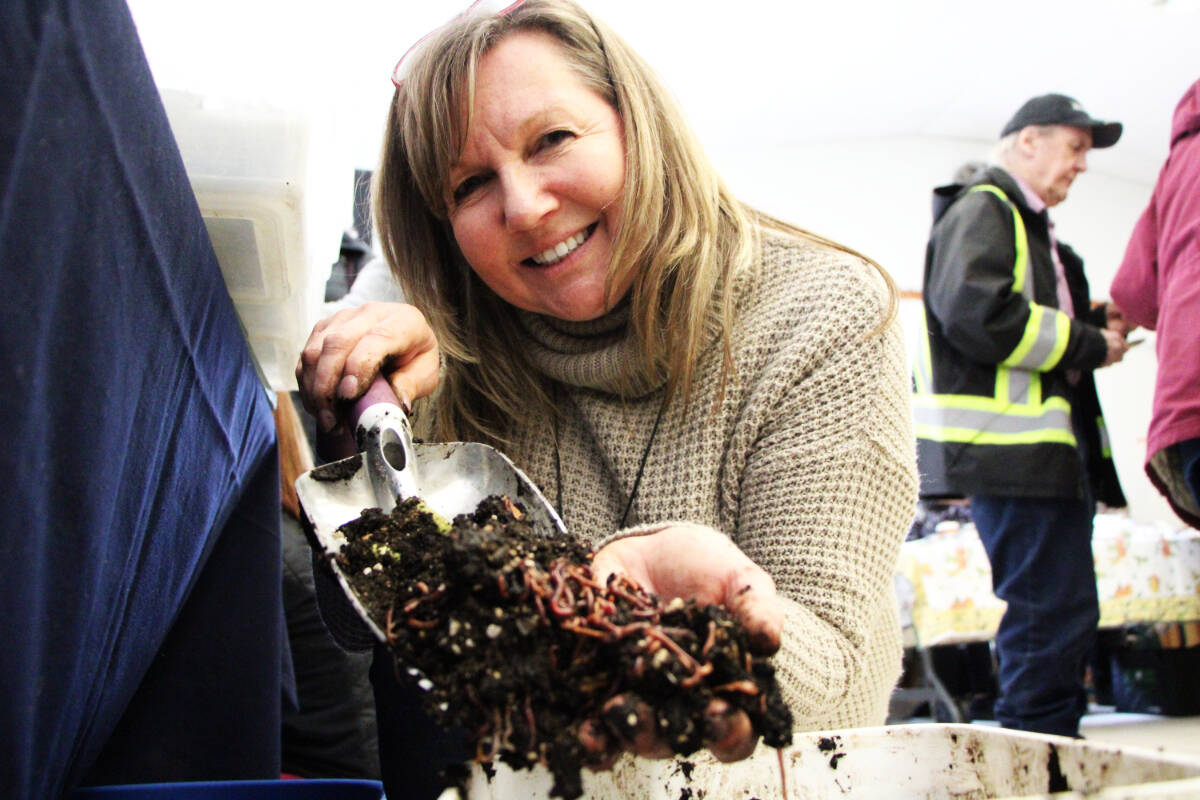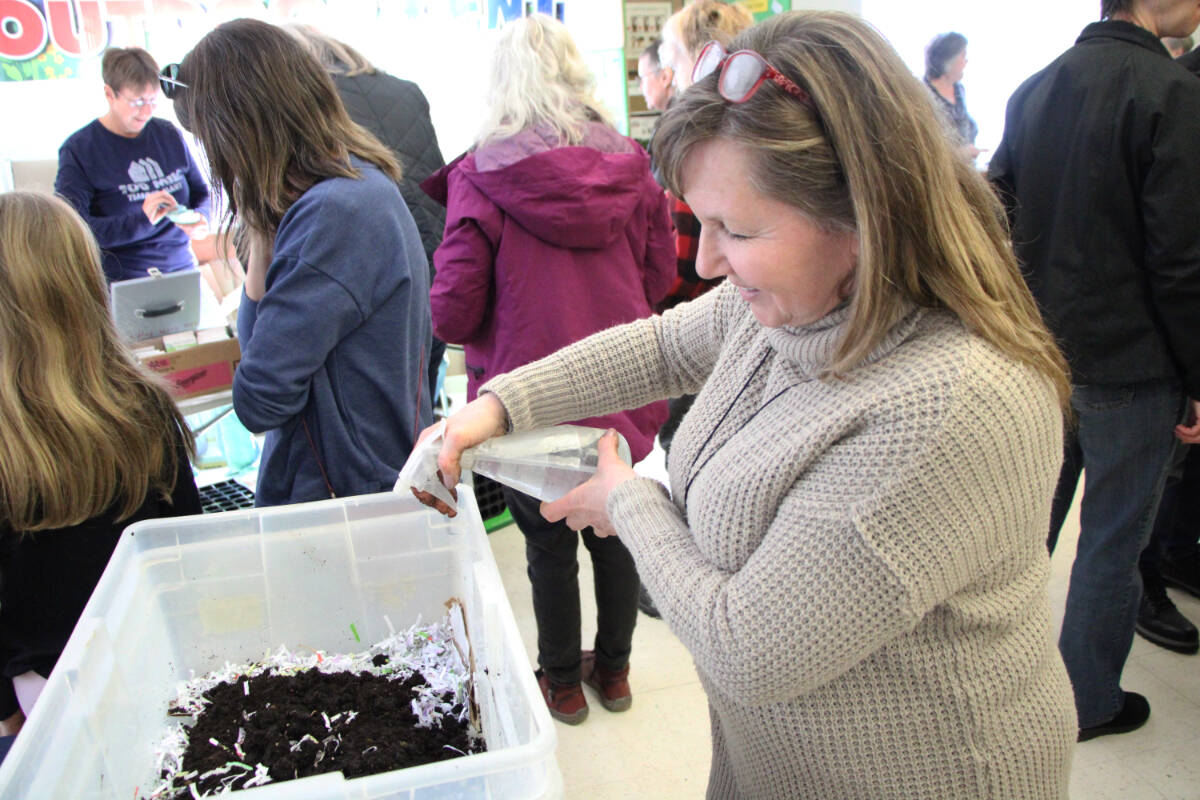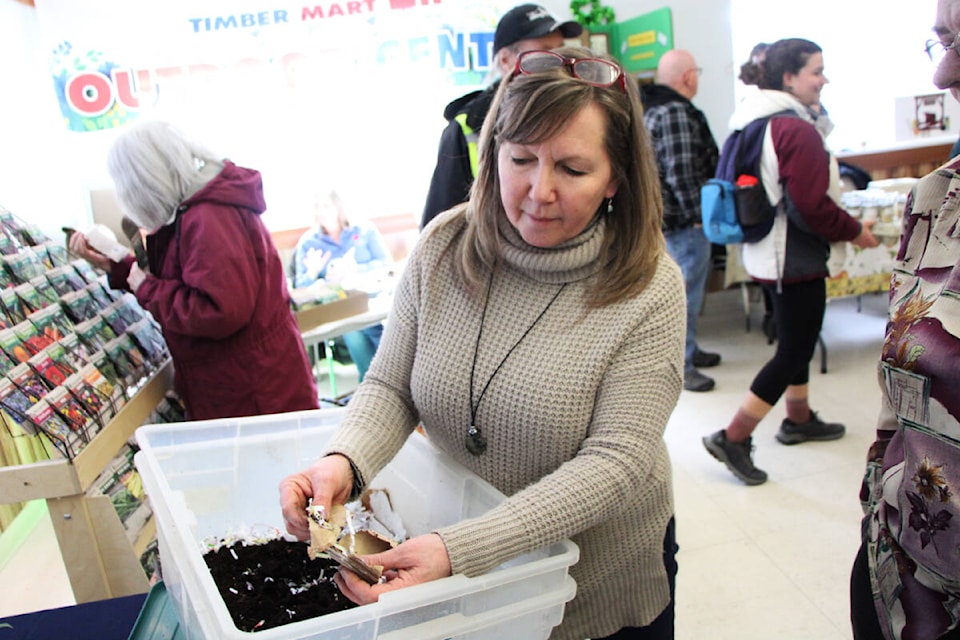If you want a steady supply of fertilizer for your garden, start a worm farm.
Using hundreds of little red wrigglers, Cindy Faulkner breaks down her organic kitchen waste and vegetable greens into organic fertilizer. Since she moved up to the South Cariboo four years ago it’s all she has needed to keep her personal garden lush and full of life.
“Earthworms are not quick enough. They don’t work fast enough to break down the food,” Faulkner explained. “Red wrigglers multiply quickly and break down the scraps so quickly there’s no smell. I chop up my greens, feed them and they’re the happiest worms you’ve ever seen.”
At Seedy Saturday on March 18, Faulkner was spreading the good word about her worms to anyone who came to her table. She sold cups of worms for $5 to those looking to start their own worm compost systems. Faulkner said it’s important to get people more involved with nature, and gardening is an easy way to do that.
“I think it’s been a hit. The kids have all enjoyed the worms and I have sold out of composters,” Faulkner said. “It’s really encouraging to show people how easy it is. You just need to start with enough worms, and then they’ll multiply exponentially. Kids love to do it, so it’s something the family can be involved in.”
Faulkner said that no matter your living situation you can fit a worm composter into your home. She got her first one while living in an apartment in White Rock and said it worked great. Because the worms eat the food there is no smell, like other kinds of compost.
Keeping the worms at a consistent temperature of 20C is key. Faulkner learned this the hard way after she lost her original batch of worms to the cold shortly after moving to the Cariboo. She was able to go online and order a fresh batch of worms, whose descendants she still uses to this day.
Using a simple plastic bin, Faulkner starts her worm composter by laying down a bed of moist shredded cardboard, shredded paper and composted soil. Faulkner said they eat the cardboard and use it for bedding.
Once she has put the worms in and they’ve got settled and spread out, she puts her vegetable scraps in one corner of the bin. Faulkner said she alternates corners so that the worms will move throughout the bin and spread the newly made fertilizer around the container.
“I’ve grown to a very large bin I keep inside my studio, and when it’s cool enough I put them outside in the shade for the summer,” Faulkner said. “I put the compost in my garden and my vegetables absolutely love it, they flourish.
It’s like black gold. Every time I put a batch of compost into the ground, I’m enriching the soil.”
patrick.davies@100milefreepress.net
Like us on Facebook and follow us on Twitter/p>


